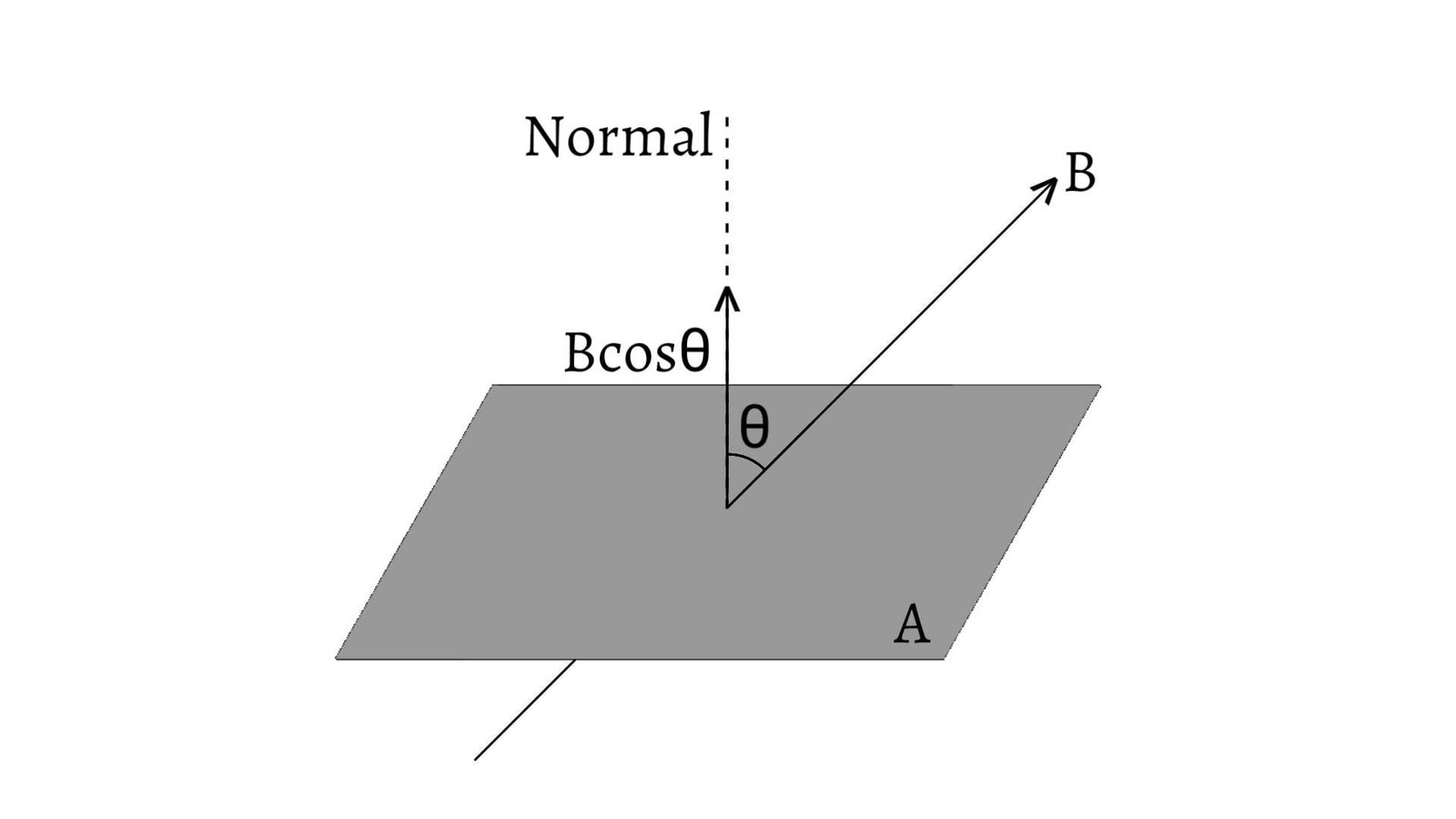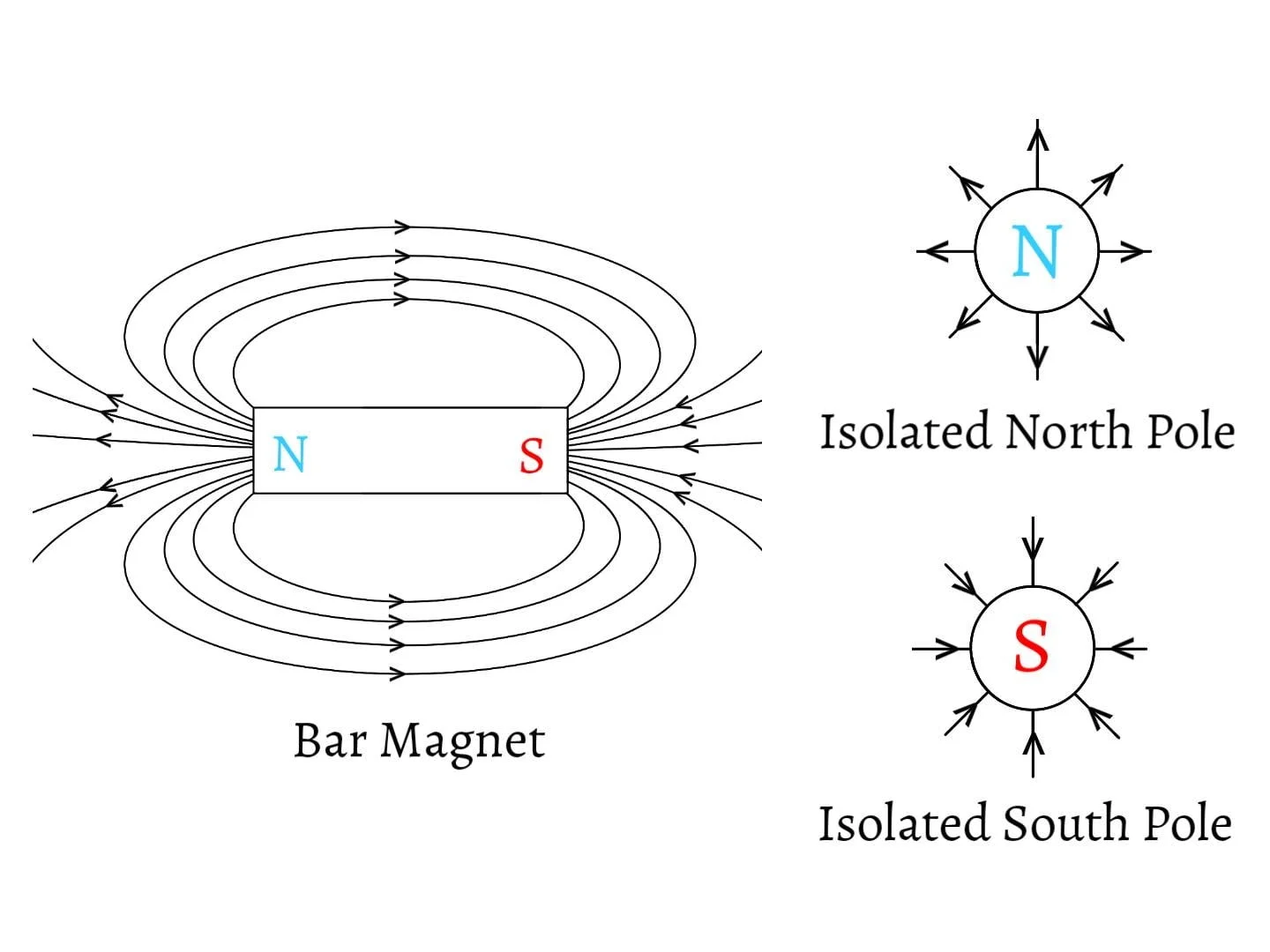The quantities required to completely specify earth’s magnetic field at any place are called magnetic elements of the earth or elements of terrestrial magnetism. They are;
Declination
The angle $(θ)$ between the geographical meridian and the magnetic meridian is called declination. Since the geographical meridian does not coincide with the magnetic meridian, there is declination. It varies from place to place and also with the passage of time.

If the declination is $17°$ east or west, it means that the north pole of a freely suspended magnet lies to the east or to the west of geographical meridian through this angle.
Inclination or Angle of Dip
The angle $(δ)$ made by the earth’s magnetic field with horizontal at a place in the magnetic meridian is called angle of dip. When a magnet is freely suspended at its centre of gravity in earth’s field, it does not remain horizontal at all places but lies making certain angle with the horizontal which is the angle of dip.

The dip is $δ°$ north and $δ°$ south according to the north pole or south pole of a freely suspended magnet which dips downwards. In the northern hemisphere, the north pole of the magnet dips downwards whereas in the southern hemisphere, the south pole of the magnet dips downwards.
The dip angle varies from place to place, its value lies between $0°$ and $90°$. At the geomagnetic equator of the earth, the magnet remains horizontal, so the angle of dip is $0°$. And at the geomagnetic poles of the earth, the magnet rests vertically, so the angle of dip is $90°$.
Horizontal Component of Earth’s Magnetic Field
Earth’s magnetic field has two components, one is along the horizontal and another is along the vertical. The component of the earth’s magnetic field along horizontal direction in the magnetic meridian at a place is called horizontal component of earth’s magnetic field.
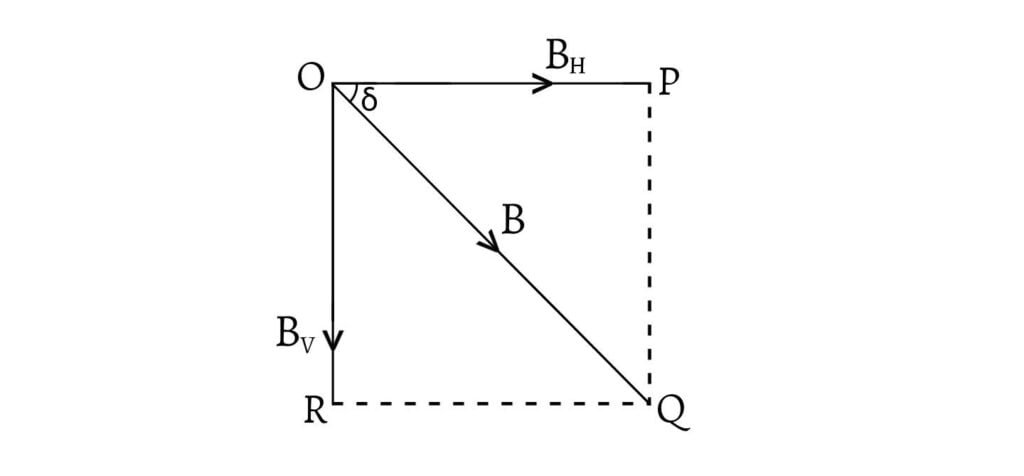
Let $B$ be the earth’s magnetic field at a place, and $B_H$ and $B_V$ be the horizontal and vertical components of earth’s field. Let $δ$ be the angle of dip of that place, then, \[B_H=B\cos δ \text{ ___(1)}\] \[B_V=B\sin δ \text{ ___(2)}\]
Dividing $(2)$ by $(1)$, \[\frac{B_V}{B_H}=\frac{B\sin δ}{B\cos δ}\] \[\tan δ=\frac{B_V}{B_H}\] \[\therefore δ=\tan^{-1}\left(\frac{B_V}{B_H}\right)\]
This gives the relation of angle dip with components of earth’s magnetic field.
Also, squaring and adding $(1)$ and $(2)$, we get, \[B_H^2+B_V^2=B^2\] \[\therefore B=\sqrt{B_H^2+B_V^2}\] Cases
- At the poles, $δ=90°$. \[\therefore B_H=B\cos90°=0\] \[B_V=B\sin90°=B \text{ (maximum value)}\]
- At the equator, $δ=0°$. \[\therefore B_H=B\cos0°=B\] \[B_V=B\sin0°=0\]
Apparent Dip
Dip circle is a device used to measure the angle of dip at a place. But if the dip circle is not in the magnetic meridian, it does not show the correct value of dip at that place. The needle will not be in the direction of earth’s magnetic field. The angle made by the need with horizontal at this place is called apparent dip.
The angle of dip in the magnetic meridian is called true dip and the angle of dip in other vertical planes is called apparent dip.
Let the dip circle be in another plane $OP’Q’R$ making an angle $α$ with the magnetic meridian $OPQR$.
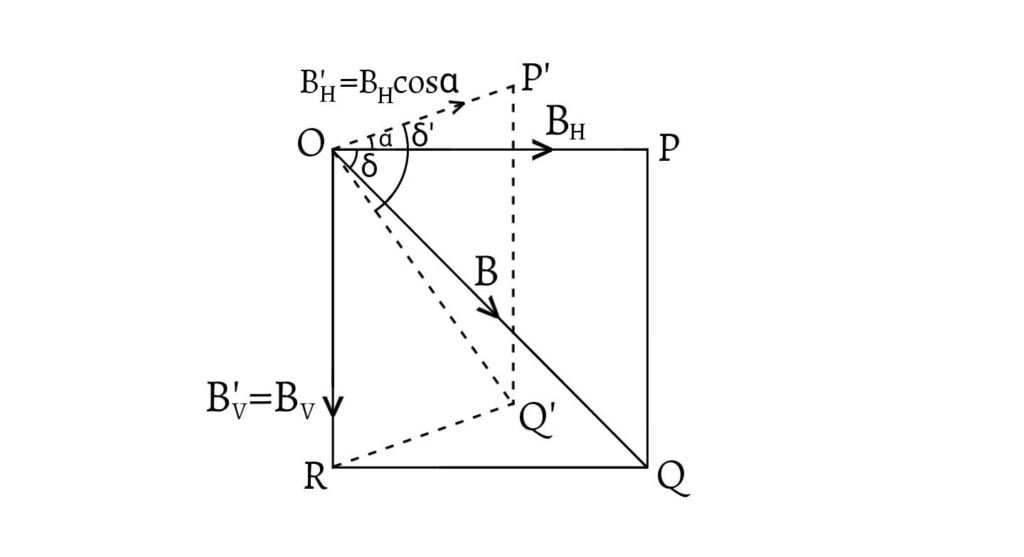
If $δ$ is the true dip, then \[B_H=B\cos δ\] \[B_V=B\sin δ\] \[\therefore \tan δ=\frac{B_V}{B_H}\]
If $δ’$ is the apparent dip, then, \[B_H’=B_H\cos\alpha\] \[B_V’=B_V\] \[\therefore \tan δ’=\frac{B_V’}{B_H’}=\frac{B_V}{B_H\cos\alpha}\] \[\tan δ’=\frac{\tan δ}{\cos\alpha}\]
This is the relation between true dip and apparent dip. It is clear that if the dip circle is rotated, $α$ will change and consequently $δ’$ will also change.
Cases
- If $\cos α=0$ $(α=90°)$ then $\tan δ’=∞$ or $δ’=90°$. Hence, when the dip circle is place at $90°$ to the magnetic meridian, the apparent dip is $90°$.
- If $\cos α=1$ $(α=0°)$ then $\tan δ’=\tan δ$ or $δ’=δ$. Hence, when the dip circle is in the magnetic meridian, the apparent dip is equal to the true dip at that place.
Relation between True Dip and two other Apparent Dips
Let $OA$ and $OB$ be two vertical planes perpendicular to each other in which apparent dips are $δ_1$ and $δ_2$ respectively. The true dip in the magnetic meridian $OX$ is $δ$.
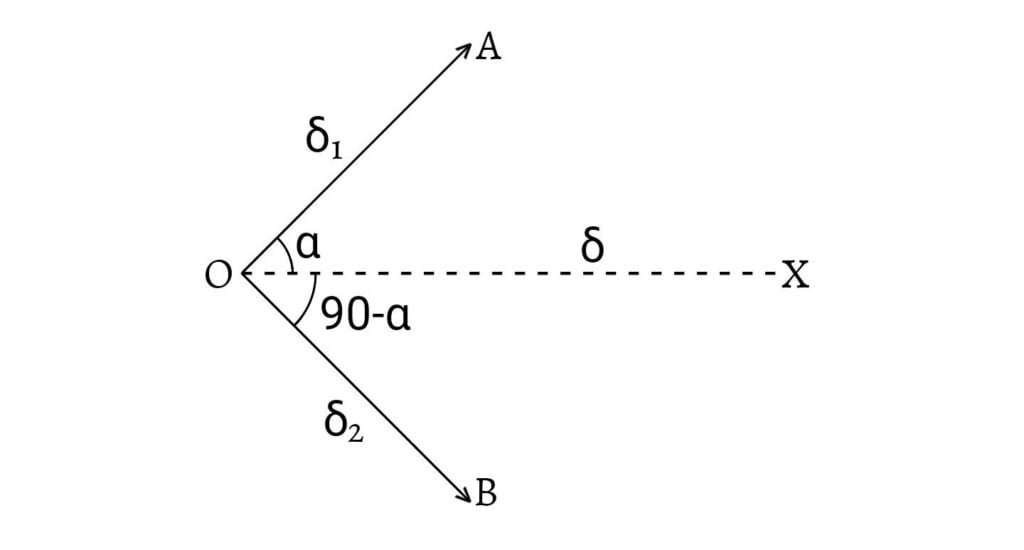
In the magnetic meridian, \[\tan\delta=\frac{B_V}{B_H}\]
Let the vertical plane $OA$ makes angle $α$ with the magnetic meridian, then, \[\tan\delta_1=\frac{\tan\delta}{\cos\alpha}\] \[\cos\alpha=\frac{\tan\delta}{\tan\delta_1} \text{ ___(i)}\]
Since $OA$ and $OB$ are perpendicular to each other, $OB$ makes an angle $90-α$ with the magnetic meridian $OX$. So, \[\tan\delta_2=\frac{\tan\delta}{\cos(90-\alpha)}\] \[\tan\delta_2=\frac{\tan\delta}{\sin\alpha}\] \[\sin\alpha=\frac{\tan\delta}{\tan\delta_2} \text{ ___(ii)}\]
Squaring and adding $(i)$ and $(ii)$, \[\cos^2\alpha+\sin^2\alpha=\frac{\tan^2\delta}{\tan^2\delta_1}+\frac{\tan^2\delta}{\tan^2\delta_2}\] \[1=\tan^2\delta\left(\frac{1}{\tan^2\delta_1}+\frac{1}{\tan^2\delta_2}\right)\] \[\frac{1}{\tan^2\delta}=\frac{1}{\tan^2\delta_1}+\frac{1}{\tan^2\delta_2}\] \[\therefore \cot^2\delta=cot^2\delta_1+\cot^2\delta_2\]
Measuring the values of $δ_1$ and $δ_2$, the real dip $δ$ can be calculated.
Variation of Magnetic Elements of the Earth
The magnetic elements at a place vary with time. Different types of changes in the magnetic elements are listed below:
- Secular change: All the magnetic elements undergo gradual changes over a long period. Such slow change is called secular change. These changes are due to the slow movement of earth.
- Annual Change: The magnetic elements vary between a maximum and a minimum value in course of a year. Such change is called the annual change. For example, the declination at a place attains a maximum value in March and a minimum value in September every year. This change is due to the different distances of the sun from the earth during one complete year.
- Stormy Change: The sudden and violent change in the magnetic elements is called stormy change. This change is due to volcanic eruption.
Previous: Terrestrial Magnetism
More on Magnetism
- Magnet
- Magnetic Field
- Magnetic Intensity
- Magnetic Vectors
- Magnetic Permeability And Susceptibility
- Classification of Magnetic Substance
- Magnetic Domain
- Magnetic Hysteresis
- Terrestrial Magnetism

